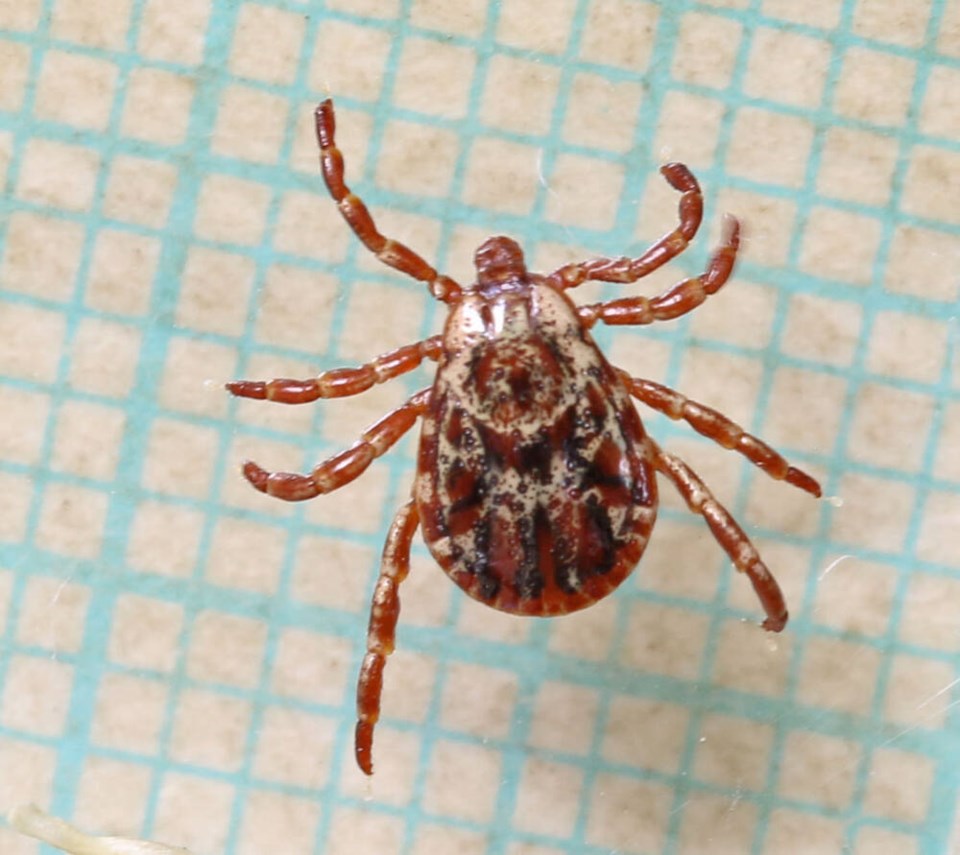One of the reasons I love living in British Columbia is that it is beautiful. It says so right on the licence plates!
As you know, B.C. is both super and natural, blessed as it is with woke DEI landscapes including rugged mountains, lush forests and stunning coastlines.
It is also crawling with majestically dangerous wild animals such as grizzly bears and killer whales and ticks.
At this time of year, the animal you most have to keep an eye on is the hardest one to see.
In fact, there are 20 species of tick native to British Columbia, although only three normally bite human beings.
Unfortunately, all of them are dangerous — of the remaining 17 species, six cause cancer and the rest prey on retirees with nonsense cryptocurrency scams.
The Ministry of Agriculture warns that you are most likely to encounter ticks in the spring and summer when doing outdoor activities such as walking, hiking and having wild, unprotected sex in the tall grass. It’s dangerous and you should stop it.
The way to tell you have a tick on you as opposed to an insect, or a tapioca pudding, is that ticks have eight legs, not six, and zero per cent tapioca.
This is because ticks are arachnids like spiders and scorpions, which is way worse than being an insect. You know it, I know it. Entomologists can go soak their heads. NOTE: soaking has no negative effect on attached ticks — they are fine with it.
The other way to tell you have a tick on you is to have an objective third party, such as a hiking buddy, point and say, “There is a tick on you.”
The next step is for you to feel sick and dizzy and lose consciousness because — I can’t stress this enough — THERE IS AN INSECT SORRY I MEAN ARACHNID ON YOU!!!
According to entomologists, ticks cannot jump or fly and do not drop from trees, yet they are surprisingly successful at suddenly appearing on animals and people out in the tick-infested natural world.
By whatever evil means a tick appears on another creature, it next sinks its horrible mouthparts into flesh in order to a) suck blood out, and b) pump disease in.
Ticks do this to give us terrible nightmares, and also because they require blood as a source of protein for growth and egg development.
This in turn leads to more ticks making baby ticks out of our blood and then more terrible nightmares ad infinitum, which is Latin for “the Great Circle of Walt Disney.”
Here’s an example. The Rocky Mountain Wood tick (Dermacentor andersoni) is found in B.C.’s interior as far north as Williams Lake, and eastward into Alberta, where it has friends in the Legislative Assembly. It is not found west of the Coast Range mountains, such as in the Pacific Ocean.
This tick is a known carrier of Rocky Mountain spotted fever, tularemia and Colorado tick fever. If it doesn’t deliver any of these particular diseases when it bites you, it can cause tick paralysis from the neurotoxin in its saliva.
You may be thinking: “Hey Dave, I live in urban Victoria, what do I have to worry about?”
To which I have just one thing to say: Victoria City Council. Also the B.C. Centre for Disease Control says there are more ticks in areas like Vancouver Island, the Gulf Islands and the Lower Mainland than the more rural Rest-of-the-Province.
Staff at the BCCDC, who are known to practise science during full moons and at the vernal equinox, say the bacterium that causes Lyme disease, Borrelia burgdorferi, is found in ticks throughout the province, including those on your front lawn.
As a quick refresher, Lyme disease is one of the citrus-adjacent infections you really don’t want to catch.
Hold on while I check the new U.S. administration’s Centers for Disease Control website for details … uh… hmmm. OK, so… there’s an egg salad recipe, and a picture of a guy with no pants drinking tequila on a beach.
Anyway, we have all heard about how bad Lyme disease is, so let’s move on to how to protect yourself from being bitten by a tick.
Wear high boots or tuck your pant cuffs into your socks like a junior high school math teacher. Tuck your shirt into your pants, or better yet into your socks. Do not wear short pants or yoga pants unless you are a supermodel.
Apply the most powerful commercial insect repellent you can sneak through customs after visiting Southeast Asia. You want something with loads of diethyl toluamide (DEET), and spray it all over your pants. Maybe dab a little behind each ear.
Avoid game trails because tick levels are higher in areas frequented by animals, and also because you might be eaten by the grizzly bears and killer whales.
After an outdoor activity, or when you are inside but thinking about outdoor activity, closely examine your clothing and skin for ticks.
If you find anything, count the number of legs! You want to gently but immediately remove any ticks, but as you will be unconscious on the floor, get a buddy to help you with this step.
This kind of friendship is as beautiful as British Columbia.



